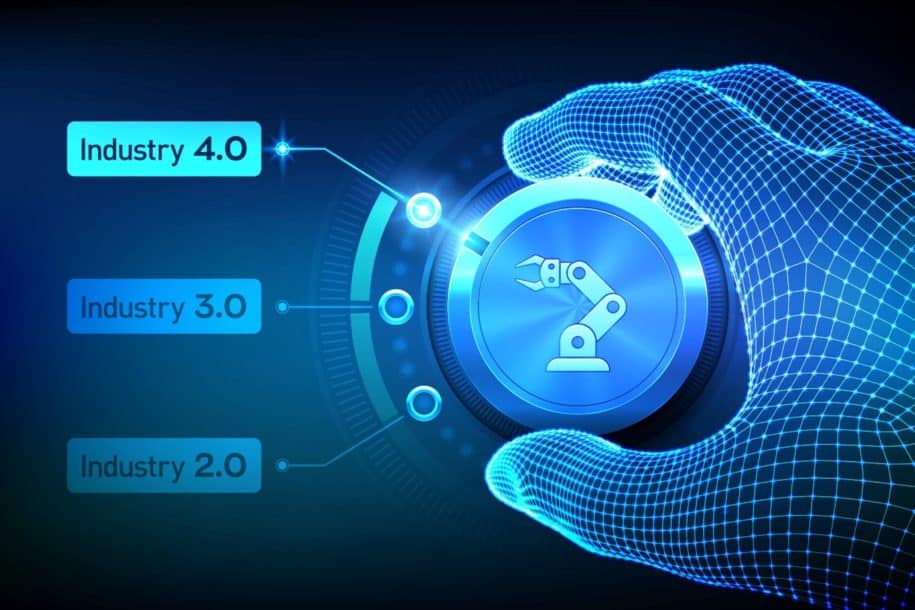Industry 4.0 revolutionizes what used to be “business as usual.” Building on the hard-earned gains from previous paradigm shifts in production, the world now enters the era of big data and never-before-seen levels of automation and interconnectivity. Dramatic improvements in planning, execution, and assessment of business operations now equip companies with tools that optimize process efficiency and quickly adapt to dynamic demands. Through the environmental health and safety (EHS) lens, these changes present lucrative opportunities.
According to the American Society of Safety Professionals (ASSP), companies lose billions of dollars to workplace accidents each year. Lost time injuries harm overall productivity as workers lose some functionality or are forced to take days off to recover. In addition to the economic costs of productivity drops, medical responsibilities and legal penalties worsen the financial toll on employers, making EHS a crucial element in a company’s success.
The combination of the need for an enormous amount of manpower and employers’ inadequate awareness of safety standards produced grossly antagonistic effects during Industries 1.0 to 3.0. Workers endured strong blows from preventable injuries and fatalities and companies scrambled to keep up with the moral, legal, and financial implications of such shortcomings. As society moved forward and governments intervened, preventive measures have been put in place, resulting in decreased injury and fatality rates. Technological advancements also made environmental health and safety less burdensome.
Paradigm Shift in EHS Risk Management through Industry 4.0
Surging advancements in manufacturing and technology during the fourth industrial revolution can now significantly ease the burden of managing EHS programs. Tapping the potential of information and communication technology (ICT) and sensors, EHS management software helps businesses create smoother transitions between reactive and proactive approaches in protecting their workers. In mining and construction sites, for instance, personal protective equipment (PPE) can now be embedded with sensors that detect parameters crucial to safety and productivity. This automation of safety monitoring processes reduces risks arising from the limitations of human capacity. So-called smart PPE can continuously detect and record worker’s vitals such as temperature, blood pressure, and respiration rate, or measure the levels of toxic gases in the workplace. They can then send alerts and trigger rescue mechanisms when high-risk threshold levels are reached.
When packaged within an EHS management software, all this gathered data can easily be linked to information distribution channels so they can be addressed in a timely manner. EHS management software digitizes and automates many other harm reduction protocols such as inspections and observations as well as training tracking and management, saving businesses time, money, and manpower. One real-world example of EHS management software utilizing Industry 4.0 advancements to incorporate proactive measures into safety programs are automated corrective action reminders. When an inspection/audit has uncovered corrective actions that need to be taken, EHS team leaders can use the software to easily assign corrective actions to team members and will receive automated notifications when the action is completed or overdue. Additionally, confirming that the action is completed correctly is a more streamlined process when using technological assistance, as the designated employee can attach photographic evidence of the correction to their submission. That photo is then stored in the database for the EHS leader to refer back to when needed.
EHS Challenges in Keeping up with Industry 4.0
While positive change should be warmly welcomed, it should not be without regard for existing hiccups that need to be overcome. The integration of Industry 4.0 elements into environmental health and safety systems faces challenges such as:
Outdated EHS Standards
Novel technologies may present new risks as well as technical and ethical dilemmas that need standardization for the sake of consistency. This inevitability yields existing EHS standards outdated. Attention must be given to the holistic implications of smart technology as it slowly infiltrates what used to be a mainly human arena.
Attainment of Optimal Human-Computer Interaction
Smart technologies have their limits and so do the humans that get them running. Capitalizing on the synergetic outputs of the two entities’ respective strengths is essential to achieve optimal productivity and safety enhancements. While smart equipment can be made homogenous, human abilities vary and so will their learning curves. But a more important point to tackle would be that their inherent abilities when it comes to doing a task the traditional way may not translate proportionally once they are required to incorporate novel equipment into the process. This may also pose risks to their safety and productivity, yielding the technology self-defeating.
Data Encryption and Cyber Attacks
Information and communication technology, which paved the way for Industry 3.0, still lies at the core of Industry 4.0. This means that huge amounts of data are collected, stored, and transmitted constantly. As more and more sensitive information is gathered, and their importance, amplified, environmental health and safety programs would mean one more thing: protecting the data themselves.
These challenges are just among many others, but they should not deter companies from dipping their toes into the new EHS paradigm. The sooner we navigate environmental health and safety through an Industry 4.0 lens, the sooner these challenges will be addressed, and the sooner we can reap the benefits.
Author Bio
The SafetyStratus Research Advisory Group (RAG) brings together thought leaders from the global environmental, health and safety community to promote best practices and provide key insights in the profession and the industries they serve. The Research Advisory Group also advocates, where practical, the intersection of and advances with the use of technology, such as the SafetyStratus enterprise EHS software platform. Group membership consists of representatives from across varied disciplines and market sectors as well as select members of the SafetyStratus team.
The primary objectives of the SafetyStratus RAG partnership are to:
- Build a strategic partnership between EHS practitioners and the SafetyStratus team.
- Provide engaging and practical content to the global EHS community.
- Provide discipline and market feedback specific to SafetyStratus products and services.
While the objectives of the RAG are varied, the primary public-facing outcome will be available through engaging and practical content found on the SafetyStratus resource pages. Various articles, papers, and other valuable resources will be produced and shared as part of an ongoing effort to cultivate a robust community. Ultimately, the SafetyStratus RAG will expand to have a broader reach and provide opportunities for more inclusion by all interested EHS professionals in a collaborative community environment.



